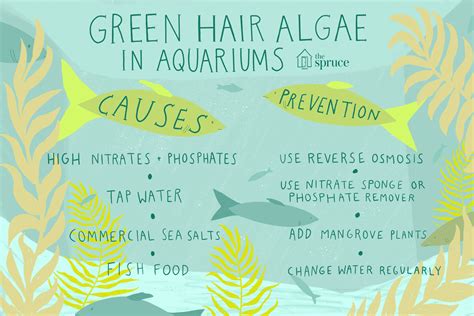Hair Algae Infiltration: Prevention and Cure
Hair algae, with its frustratingly tenacious strands, is a common nightmare for aquarium hobbyists. This unsightly green algae, characterized by its long, thin filaments that resemble—you guessed it—hair, can quickly take over your tank, smothering plants and obscuring the view of your beloved fish. But don't despair! Understanding the causes of hair algae infestation and employing effective prevention and cure strategies can help you reclaim your aquarium's pristine beauty.
What Causes Hair Algae?
Before tackling the problem, it's crucial to understand its root causes. Hair algae thrive in specific conditions, and addressing these imbalances is key to preventing future infestations and successfully eradicating existing ones.
High Nutrient Levels (Phosphates and Nitrates):
This is often the primary culprit. Excess phosphates and nitrates, stemming from overfeeding, decaying organic matter, or insufficient filtration, provide a nutrient-rich feast for hair algae to flourish.
High Light Intensity:
While plants need light, excessive or improperly directed light, especially high-intensity lighting for long durations, can fuel algae growth, including hair algae.
Poor Water Circulation:
Stagnant water allows nutrients and algae to accumulate in certain areas, creating ideal conditions for hair algae to take hold.
Inadequate CO2 (for planted tanks):
In planted tanks, insufficient carbon dioxide can lead to a competitive imbalance, allowing algae to outcompete plants for nutrients.
How to Prevent Hair Algae
Proactive measures are the most effective way to combat hair algae. Here's how to create an environment less hospitable to these unwelcome guests:
Maintain Proper Water Parameters:
Regular water changes (20-30% weekly) are vital to dilute excess nutrients and maintain stable water chemistry. Monitor your nitrate and phosphate levels using a reliable test kit and take corrective action if necessary.
Optimize Lighting:
Adjust your lighting schedule to mimic natural daylight cycles. Avoid excessively long photoperiods, and consider using a timer to control lighting duration. Ensure your lighting isn't too intense for your tank's size and plant life.
Enhance Water Circulation:
Utilize powerheads or other circulation devices to ensure proper water flow throughout the tank. This prevents nutrient buildup and creates a more evenly distributed environment.
Responsible Feeding:
Overfeeding is a major contributor to nutrient buildup. Feed your fish only what they can consume within a few minutes, and remove any uneaten food immediately.
Regular Maintenance:
Regular cleaning of the substrate, filter media, and aquarium glass will help remove accumulated debris and prevent nutrient buildup.
How to Cure Hair Algae
If your tank is already suffering from a hair algae infestation, you'll need a multi-pronged approach to eliminate it.
Manual Removal:
For small infestations, you can manually remove the algae using a siphon or algae scraper. Be gentle to avoid damaging your plants.
Water Changes:
Frequent, larger water changes (up to 50%) can help dilute nutrient levels, making the environment less suitable for algae growth.
Nutrient Export:
Consider adding plants that efficiently absorb nutrients, helping to reduce the available food source for the algae. Fast-growing plants are particularly effective.
Adjust Lighting:
Reduce the intensity and duration of your lighting schedule to curb algae growth.
Consider Algae-Eating Creatures:
Certain species of snails and shrimp are known to consume algae, though they might not completely eliminate a severe infestation.
Chemical Treatments (Use with Caution):
In severe cases, chemical treatments targeting algae may be considered. However, these should be used as a last resort and with extreme caution, as they can harm fish and plants if not used correctly. Always follow the manufacturer's instructions precisely.
Frequently Asked Questions
What is the best way to prevent hair algae in a new aquarium?
The best prevention is a well-planned setup. Start with clean substrate, use a good quality filter, and avoid overstocking and overfeeding from the outset. Regular water changes and monitoring water parameters are crucial during the initial setup and ongoing maintenance.
Can hair algae harm my fish?
While hair algae itself isn't directly toxic to fish, it can indirectly harm them by reducing dissolved oxygen levels, blocking light to plants, and creating hiding places for parasites. A severe infestation can also lead to stress and reduced overall well-being for your fish.
Does hair algae indicate a problem with my aquarium?
Yes, a significant hair algae bloom usually indicates an imbalance in your aquarium's ecosystem, often related to high nutrient levels, excessive light, or poor water circulation.
How long does it take to get rid of hair algae?
The time it takes to eliminate hair algae depends on the severity of the infestation and the methods employed. It can take weeks or even months to fully eradicate a severe infestation, requiring consistent effort and diligent maintenance.
By understanding the causes of hair algae and implementing these prevention and cure strategies, you can keep your aquarium thriving and free from this persistent nuisance. Remember, patience and consistency are key to success in maintaining a healthy and beautiful aquatic environment.

